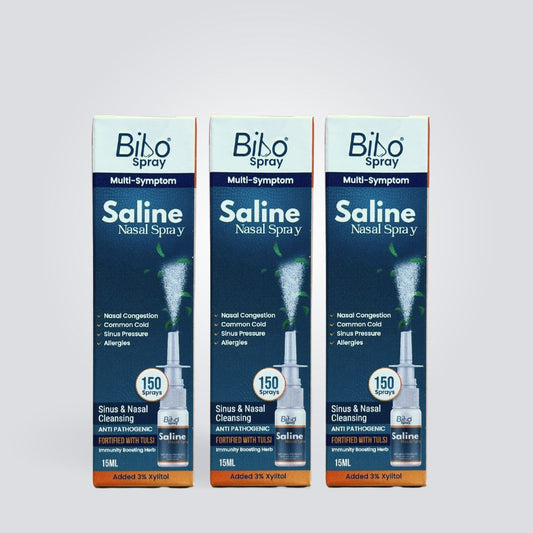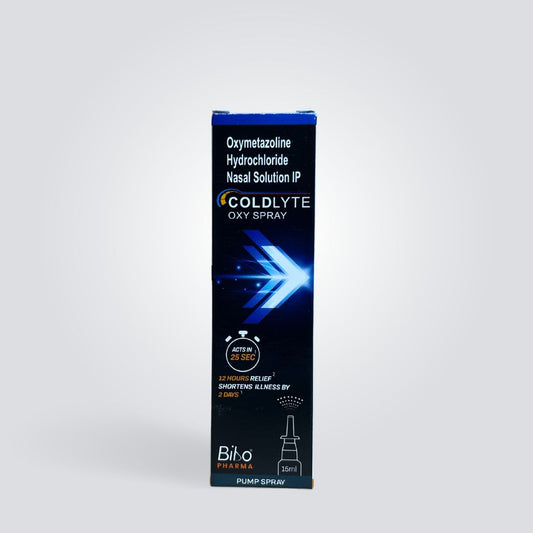
Did you know that almost 80% of the world's population has a deviated nasal septum? Well, before we get into the topic let’s see what nasal septum is?
The nasal septum is a thin wall made of cartilage and bone that divides our nose into 2 nostrils or nasal passages (right and left nostrils). A deviated nasal septum is nothing but an uneven division of the nasal passages due to the displacement of the nasal septum to one side. In other words, it is when the nasal septum is leaned or off-centered towards one side of the nose. When the nasal septum deviates, one nasal passage becomes smaller compared to the other.
Generally, we see many people who may have a deviated nasal septum but might not even know it. Only when they go for a nasal examination they find out that their nasal septum is deviated. This is because a slight deviation in the nasal septum may not cause any harm or show any symptoms.
But in some people, the deviation is more which can cause various symptoms, including blocked nose, nasal congestion, and even breathing difficulty in a few cases.
Causes of a deviated nasal septum:

A deviated nasal septum can be due to-
- Congenital or birth defect: Congenital defects can be one of the most common causes of deviated nasal septum. This occurs during fetal development in the womb. An infant can also get a deviated nasal septum during the delivery due to difficulty in delivery.
- Nasal Injury: Injury to the nose, which causes the nasal septum to move to one side, can be another most common cause of deviated nasal septum. It is commonly seen during accidents, falls, or in people who are involved in contact sports such as wrestling.
Symptoms of deviated nasal septum:
Most people with a deviated nasal septum may not show any symptoms. They might not even know that their nasal septum is deviated or off-centered. It is seen in people where the nasal septum has slightly deviated. But some people, especially people with a greater nasal septum deviation or deformity, may experience few signs and symptoms. A few of these symptoms may include:
- Nasal congestion or obstruction: A deviated nasal septum can cause frequent nasal congestion or obstruction. It is because one of the nasal passages is very narrow compared to the other. A person may experience this most commonly during a cold or allergies when the nasal passages are swollen and narrowed. Nasal congestion can also make a person feel difficulty breathing through their nose.
- Nosebleeds: Nosebleeds are common in some people with deviated nasal septum.
- One-sided facial pain or headache: When the nasal septum is deformed to a greater extent, it can cause facial pain on one side of the face. It is because the inner surfaces of the nose touch each other, causing pain and pressure.
- Trouble sleeping: Nasal congestion can increase during sleep, which can make breathing even more difficult at night. Due to the increased congestion, most people with a deviated nasal septum may not be able to sleep properly and have trouble sleeping.
- Noisy breathing: Noisy breathing can be a common symptom in people with a deviated nasal septum. It is mainly seen due to nasal congestion and narrowed nasal passages on one side.
- Snoring: Nasal congestion during sleep commonly increases, which may make breathing more difficult. As a result of this, a person may be likely to snore.
Complications of a deviated nasal septum:
When the nasal septum is deviated to a greater extent, it can block one side of the nose, which can lead to various other symptoms like-
- Difficulty breathing through the nostrils
- Mouth breathing
- Dry mouth, which occurs due to mouth breathing
- Sleep disturbances
- Snoring
Treatment:
The treatment for a deviated nasal septum may include medications and surgery. Medications are generally given to provide symptomatic relief (to reduce the symptoms) while surgery is considered when the medications fail to work and the patient faces severe symptoms.
Medications for a deviated nasal septum
As mentioned, medications only help to reduce the symptoms but do not provide a cure or correct the deviated nasal septum. The most commonly used medicines for a deviated nasal septum include-
- Decongestants: These medicines help to keep the nostrils open. They are available as tablets and nasal sprays. They shrink the blood vessels lining the nasal passages so that there is enough space in the nasal passages for the air to pass. The decongestants nasal sprays are among the quick-acting nasal sprays as they start to unblock the nose in a few seconds (less than 30 seconds). But one of the limitations of these sprays is that they cannot be used for more than a few days (3-5 days). They only provide relief for a short period and are not advised to use for the long term.
- Steroid-based nasal sprays: These sprays are commonly used for long-term relief. They help reduce the swelling in the nasal passages, which may be the reason for nasal congestion and obstruction. These sprays are also known as maintenance sprays as they provide long-term relief from the symptoms. One of the limitations of these sprays is that they cannot be used to get quick relief from nasal congestion and other symptoms.
- Antihistamines: Antihistamines are medicines that are used to block the action of a chemical called histamine, which is generally released during an allergic reaction. Histamine is responsible for inflammation in the body. People with a deviated nasal septum are more prone to nasal congestion and inflammation. These antihistamines help to reduce inflammation and other symptoms. These medicines are available as tablets and nasal sprays.
Generally, a combination of steroid and antihistamine nasal spray is also preferred to get long-term relief from the symptoms.
Surgery
When the medications do not help provide relief, a person may have to undergo surgery. Septoplasty is the surgical procedure used to correct a deviated nasal septum.
- Septoplasty: It is a surgical procedure to correct the deviated nasal septum. In this surgical procedure, the surgeon may cut and remove some parts of the septum and then reinsert them in the proper position.
In septoplasty, the surgeon will straighten and reposition the nasal septum in the center of the nose. After septoplasty, you may experience the nasal congestion to be completely gone.
- Rhinoplasty: In rhinoplasty, the surgeon will reshape and resize your nose. It is generally done at the same time as septoplasty.




